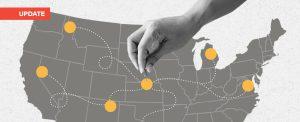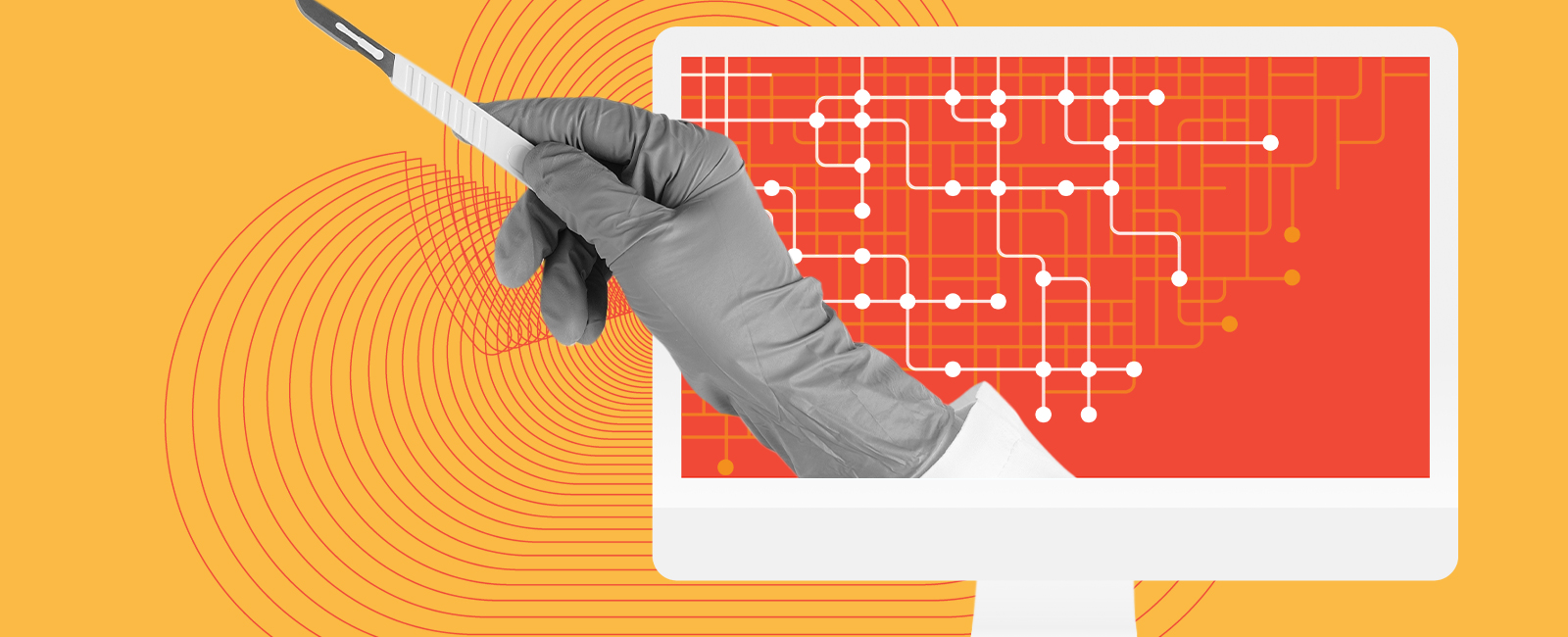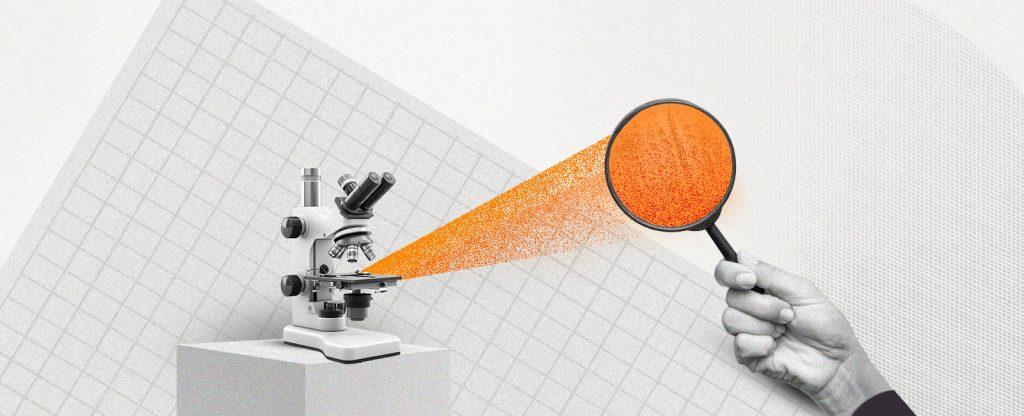David Benton, current CEO of the National Council of State Boards of Nursing (NCSBN), has worked in high-level government positions around the world throughout his career, making efforts to move the health care professions forward since the early 1980s. In the second of our three-part Q&A series, Benton and Ascend Magazine Editor Paul Leavoy discuss NCSBN, regulatory frameworks for health care, and the promise of technology in regulation.
Can you give us a sense of how NCSBN works with health care regulators across the U.S. and its territories? How does that relationship work?
NCSBN is a not-for-profit organization which facilitates the coming together of the nursing boards in the United States but also more widely in the field as well. We will have been in existence next year for 45 years. All of the U.S. boards are members, and a number of the territories are members as well. We also have associate members, outside the U.S., from Canada to as far as Kazakhstan, New Zealand, etc.
We also have what’s known as exam user members. These are individuals that are not part of the U.S. but use the NCLEX exam and, as such, have a different level of engagement with us as well. We do not control any of our members. We are there to bring the members together to identify common problems and find solutions, but it’s a choice that is made by the state or province as to whether they move together with any of the things we offer.
We also work very closely with other regulators. There’s a small group of regulators — we call ourselves the health care regulatory chief executives’ group — where my colleagues, from the pharmacists to the therapists, occupational therapists, psychologists, and social workers, come together. Particularly during COVID, when we were having to change a lot of our systems, the problems that we were facing as individual disciplines read across well, so a lot of shared learning took place there.
In addition to that, we also serve on some wider groups as well. For example, I am serving on a World Health Organization (WHO) group that is in the process of redesigning the regulatory framework for health professions in the world, developing guidance on that. And much of the NCSBN staff serves on different groups, either at a national level or internationally.
How can regulatory frameworks be useful in health care regulation?
Regarding nursing regulation, again, I’m going to use the orchestra as the example. A hundred and ten years ago or so, when nursing regulation kind of started in the U.S., the nurse regulator was the only cinder block that was there to try and protect the public. Since then, a whole series of other systems have come in. We’re no longer the sole player, we’re part of an orchestra. A part of what we need to think about is how the work of, for example, hospital-based accreditation systems interfaces with what we do in the professional regulatory space. Or some of the work the insurance companies are doing as well.
The challenge as we move forward is for regulators to start to manage things upstream. By that I mean not waiting until someone has a problem and dealing with them but interacting with employers to get a much better intervention point at an earlier stage. You’re keeping people competent rather than waiting to deal with incompetent individuals. Consider the work that we’ve been doing around the use of the NCSBN ID number – around the world there are approximately 27 million nurses, and five million of those are in the United States, and each one of those has something called an NCSBN ID number. Because of the work we’ve done in Canada, Canadian nurses have also got that number.
By using that number and connecting it, for example, to the electronic health record, you can start to get information about the educational needs of the individual. What is it that that individual is doing, and can it help to guide their continuing education needs? By tracking what it is people are doing at different stages of their career, what would be the appropriate educational preparation for those individuals at that stage? Grounding it very much on what it is people are doing, rather than just having one entry point that asks what a newly qualified individual does, gives us a mechanism that is real-time that enables us to change things.
We know that there have been major changes in the health dynamics in the U.S. and in other countries. What does that mean for the way that we prepare, we educate, and we assure the quality of clinicians in the world we now live in?
There appears to be a gulf between how tech could be used in health care regulation and how it is used today. How are you seeing digital technology used in health care regulation?
It’s been used in a number of ways. It’s been used as a vehicle for communication, as an adjunct to educational preparation. We’re seeing some very exciting developments, and some of the research that NCSBN has done in terms of, for example, how technology can be used for simulation, has set the global benchmark in terms of how much simulation can be used and result in a competent practitioner. So that’s one area.
Another area that we’re now starting to see technology used in is managing things like complaints handling. We know that about 1.1% of the population has a complaint against them. Some of those are frivolous and others are very serious. The role of the regulator is to focus on those ones that are serious and make sure those that are perhaps frivolous are dealt with in a sensitive way that doesn’t take you down a rabbit warren.
We provided some funding to colleagues in the U.K. who did an international study looking at Australia, the U.K., and Texas to see how artificial intelligence could be used to screen the complaints that are coming in. The ones that need immediate significant intervention are identified quickly and you then target your resources to deal with that because those are the ones that have got the potential of doing more harm.
For the ones that are less worrisome, technology enables you to use different routes, whether that’s negotiated agreements or anything else. We can use technology to streamline and better use the resources we have to be more efficient and effective at protecting the public. We’re using it now, for example, to capture information.
We have something called the notify system, which enables employers (and indeed the individual nurses as well) to sign up themselves and get reminders about when various things are due. If they’ve got multiple licenses, they’ll get information like, “your Minnesota license is due now, so you need to do these various things,” or the employer gets real-time updates in terms of changes in the individual’s license. If someone has forgotten to renew their license, the employer gets a notification saying that they haven’t and that they’re practicing without a license. We’re using technology to bring all that information together. The fact that the employer is giving us this information means that we’ve got much better workforce data as well as the regulatory data.
We get to understand the mobility of nurses in a way – obviously, over the years we’ve seen increased demands to facilitate nurse mobility – and that’s why we brought forward the Nurse Licensure Compact (NLC), to facilitate all of that and simultaneously have mechanisms to enable the protection of the public. A lot of the changes that were introduced during COVID-19 – where basically if you have a license anywhere, you can use it anywhere – did not enable those individuals, if something went wrong, to be held to account. That’s where fundamentally the NLC, which is a mutual recognition model, is far superior in terms of protecting the public, and technology plays a major role in that in terms of making information available in real time to those who need to know it.
Artificial intelligence (AI) is a loaded term these days, and it means a lot of things to different people. We’ve talked a lot about digital technology in regulation. How is that intersecting with AI these days?
Some colleagues and I just finished work on looking at how sunrise legislation is operating in the U.S. If you want to regulate a discipline, whatever that discipline is, does it meet certain criteria? We identified that the original promises of sunrise legislation had not been fulfilled, but there is a lot of information there that could be used in a very efficient way. One of the major findings was the need to use technology to analyze the level of risk a particular discipline presents to the public, and based on that level of risk, to then determine what the appropriate regulatory intervention should be for that discipline.
Do they simply need to have insurance? Do they simply need to have a registry where, if you have a certain education, you put your name on it and that’s it? Does there need to be certification? Does there need to be licensure? What’s the gradation of interventions you need? That’s where technology can come into play. I think one of the important pieces of work which hasn’t been done anywhere in the world is something which I describe as conjoint analysis, where you basically compare a whole series of different variables, and as a result of that, you accurately locate the level of risk and the appropriate intervention that’s needed.
Take Right-touch regulation – it has been a great idea, but the evidence of how you operate it is very slim. If we’re going to go down the route of a model of proportionate regulation, where you regulate as much as you need to protect the public but you don’t go further than that, then using technology to do things like conjoint analysis or discrete choice analysis across a wide range of occupations including the health professions is what needs to be done, because that’s what will give you evidence-based Right-touch regulation. Without it, it’s theoretical.
Be sure to read the final part of our interview series with David Benton, in which we discuss risk-based regulation, resilience in the wake of COVID-19, the future of health care, and more. Missed the first part? Find it here.
MORE INSIGHT

‘The people piece’: The key role of people in regulatory transformation
Regulatory transformation is not only about changing an organization’s technology and processes; it is also about empowering and engaging its people throughout the journey. In this article, Rick Borges looks at the key role that people play as enablers of regulatory transformation.

Playing in the sandbox: Old regulators are learning new tricks
Regulators are increasingly turning to an innovative policy tool called a “sandbox” to address various challenges. In this article, Contributor Will Morrison explores the origins of regulatory sandboxes and how they work.

Regulators tackle operational resilience in the UK
To mitigate the risk of major operational failures affecting the day-to-day lives of millions of financial services customers, U.K. regulators issued new rules on operational resilience that came into force in March 2022. In this article, Rick Borges looks at the requirements and the impact they will have on firms’ cyber resilience and use of third-party providers.

An exhaustive breakdown of interstate compacts in the U.S.
Just how many interstate licensing agreements are active in the U.S.? And in which professions are regulators looking to further promote license mobility? In our latest Ascend article, we take an in-depth look at the country’s largest active and pending multistate licensing agreements.

How the U.K.’s new Consumer Duty will change how firms operate
On July 31, the U.K.’s Financial Conduct Authority (FCA) will begin enforcing a new Consumer Duty that will set higher and clearer standards of consumer protection across financial services and require firms to put their customers’ needs first. In this article, Ascend Contributor Rick Borges explores the impact this change will have on how firms operate.

Cayton asks ChatGPT: Is AI a good thing or a bad thing?
Is AI a good thing or a bad thing? It’s a question that’s currently top of mind for lawmakers and citizens alike as the development of increasingly powerful AI technologies continues at a rapid pace. As Harry Cayton recently contemplated this question, he decided to ask ChatGPT to see what it had to say.








